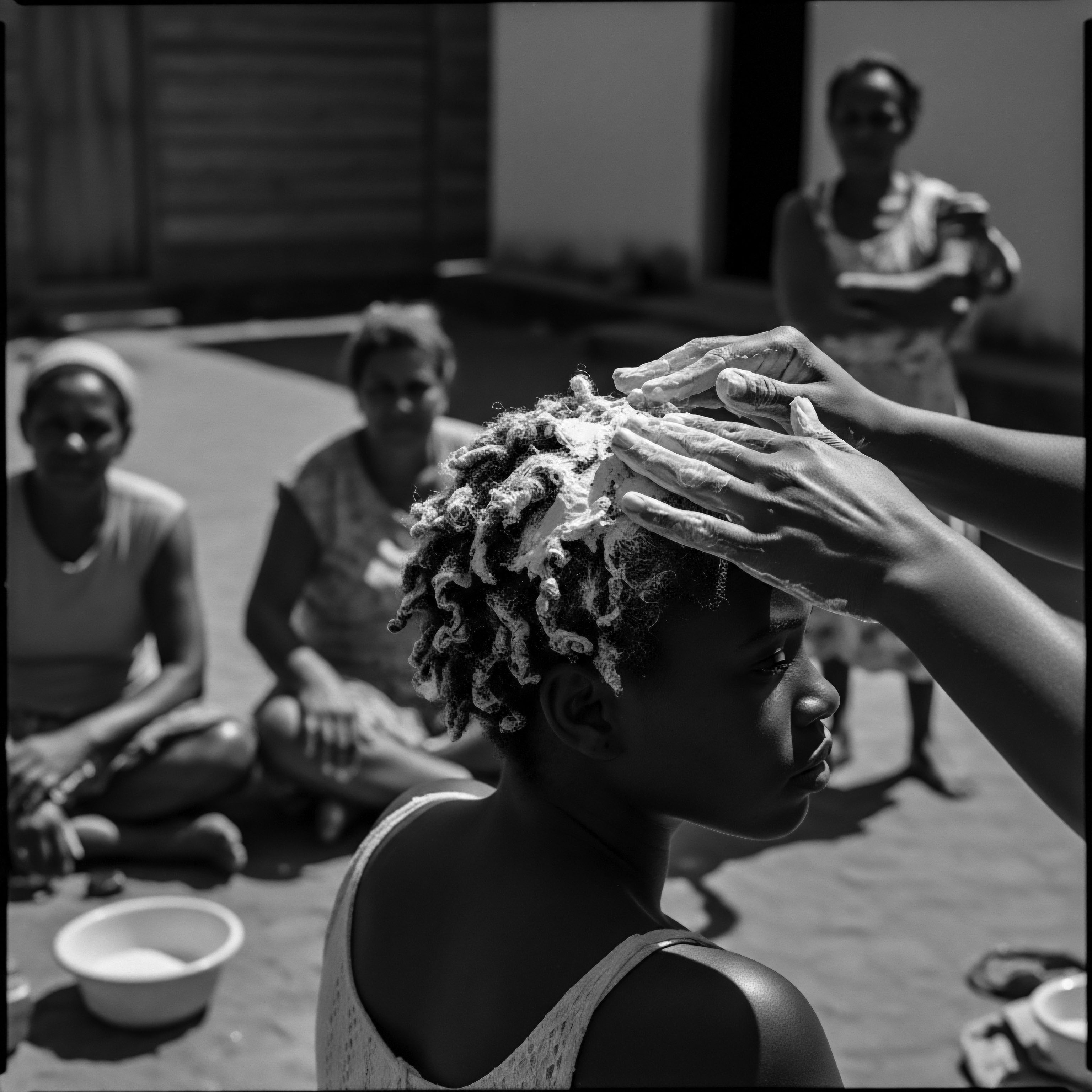
Fundamentals
The spirit of a strand, a delicate yet resilient filament, holds within its very structure the whispers of generations. Understanding the Hair Fiber Mechanics is to listen closely to these echoes, discerning the physical behaviors and inherent strengths that define our textured hair. It is a fundamental explanation, a designation of the forces and responses governing each individual strand, from its birth at the follicle to its full expression in intricate coils, curls, and waves. This delineation helps us appreciate the biological blueprint that ancestral hands intuitively understood, long before microscopes revealed the secrets held within.
At its simplest, Hair Fiber Mechanics is the study of how hair responds to physical forces—stretching, bending, twisting, and the very air it breathes. It encompasses the strand’s ability to resist breakage, its capacity to absorb and release moisture, and its inherent shape. For textured hair, this understanding moves beyond mere scientific observation; it becomes a reverence for a living legacy, a testament to resilience passed down through time. The mechanical properties of hair are not static; they are a dynamic interplay of internal architecture and external environment, continually shaped by the stories they carry.
Hair Fiber Mechanics unveils the intrinsic strengths and behaviors of textured hair, a knowledge implicitly held and honored by ancestral practices.
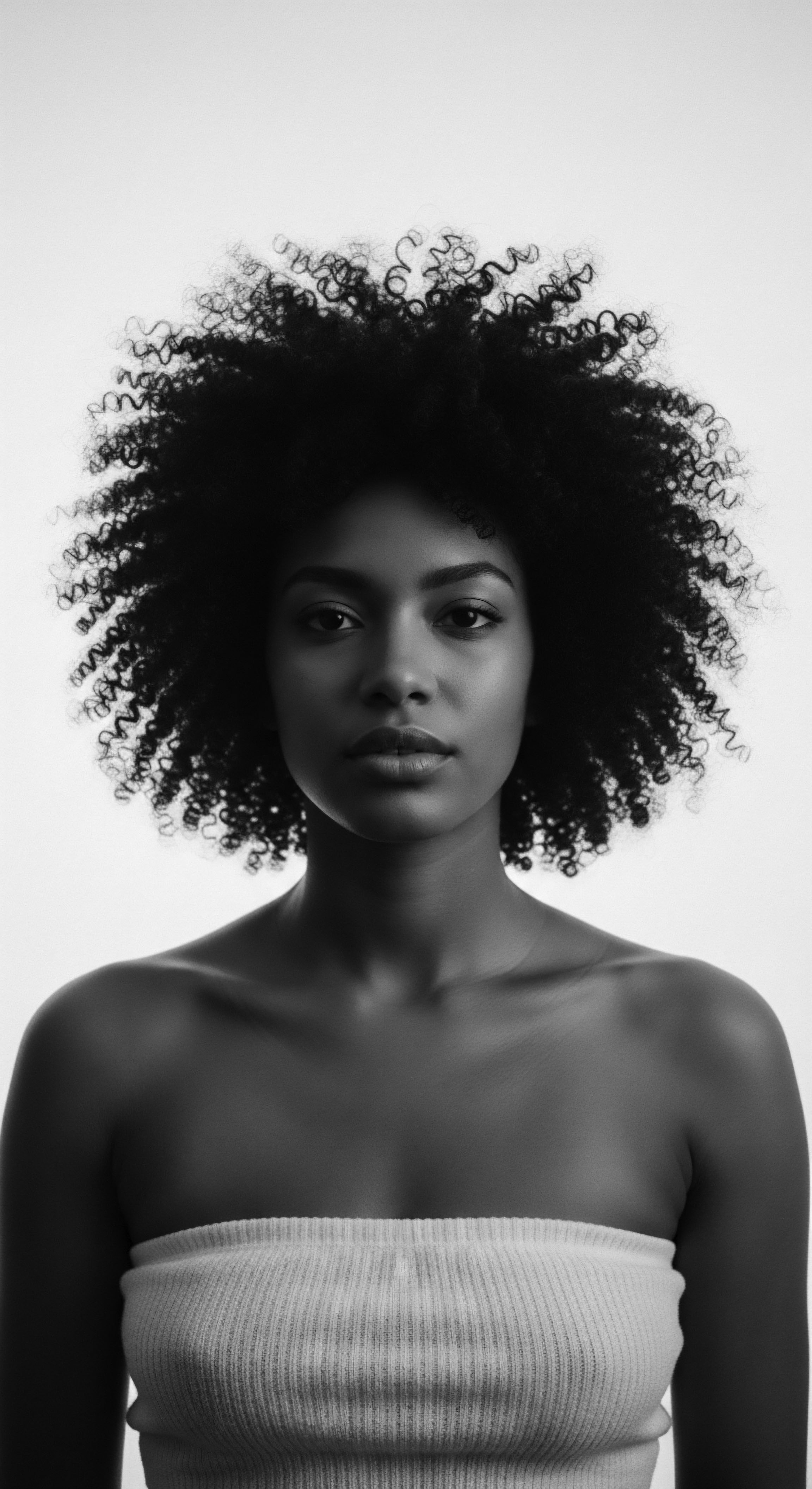
The Architectural Wisdom of the Strand
Each hair strand, though seemingly simple, is a marvel of biological engineering. Its core components—the cuticle, cortex, and sometimes the medulla—collaborate to grant hair its unique characteristics. The outermost layer, the Cuticle, comprises overlapping scales, much like shingles on a roof.
Their arrangement and integrity determine how light reflects, how moisture is retained, and how easily strands can glide past one another. In textured hair, these scales may be more raised or less uniformly laid, contributing to its distinct feel and needs.
Beneath the cuticle lies the Cortex, the heart of the hair fiber. This is where the bulk of the hair’s mass resides, composed of keratin proteins spun into complex helical structures. The arrangement of these protein chains and the disulfide bonds that link them are central to the hair’s elasticity and strength. The unique helical structure and distribution of these bonds in coily and curly hair grant it its spring-like quality, allowing it to stretch and return, a characteristic that has been celebrated and protected through generations of care.
Some hair types also possess a central core, the Medulla, a soft, sometimes discontinuous, region. While its precise mechanical role is still being fully explored, its presence or absence can influence the hair’s overall diameter and porosity. Ancestral wisdom, perhaps without formal nomenclature, instinctively recognized these internal variations, guiding the selection of specific ingredients and techniques for different hair types within a community.
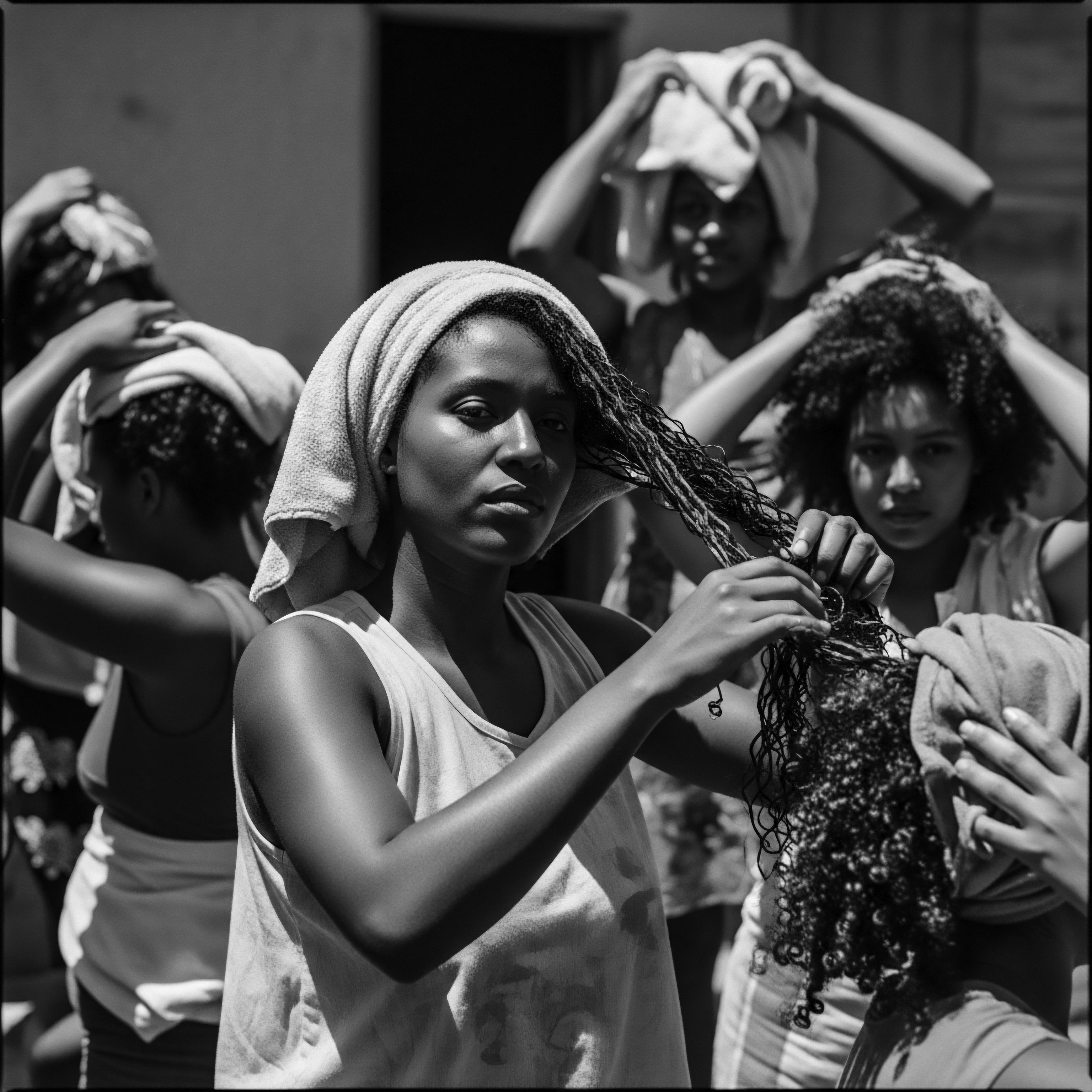
Porosity ❉ A Legacy of Absorption
Porosity, a key aspect of hair fiber mechanics, refers to the hair’s ability to absorb and retain moisture. It is governed primarily by the cuticle layer. Hair with a more open cuticle is considered highly porous, readily absorbing water but also releasing it quickly.
Conversely, hair with a tightly sealed cuticle is less porous, taking longer to absorb moisture but holding onto it more effectively. Textured hair, particularly coily and curly strands, often exhibits varying degrees of porosity along a single strand, a natural attribute that informs traditional moisturizing rituals.
- High Porosity ❉ Often seen in hair that has been exposed to environmental stressors or chemical treatments, or naturally in some textured hair types. This hair thirsts for moisture, readily absorbing oils and water, yet requires diligent sealing to prevent rapid evaporation. Ancestral practices frequently incorporated layering of emollients to address this.
- Medium Porosity ❉ Considered balanced, this hair type generally accepts and retains moisture well. It often represents a harmonious state, responding favorably to a wide range of traditional and modern care methods.
- Low Porosity ❉ Characterized by tightly bound cuticle layers, making it resistant to moisture absorption. Water often beads on the surface. This hair type benefits from warmth and lighter, penetrating oils to assist in hydration, a method often seen in historical steaming practices or warm oil treatments.
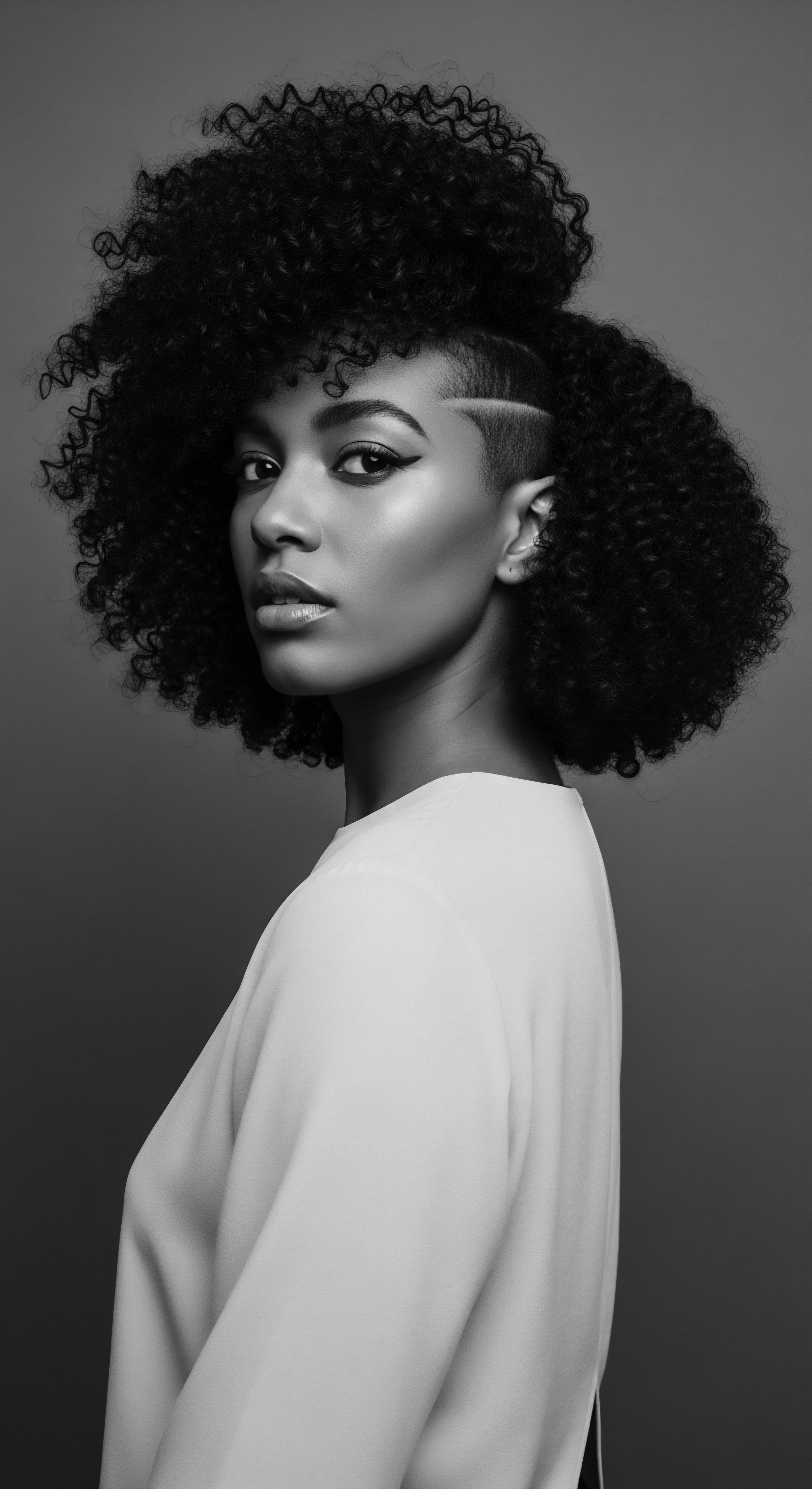
Intermediate
Moving beyond the foundational elements, an intermediate understanding of Hair Fiber Mechanics deepens our appreciation for the intricate dance between molecular structure and visible resilience. It reveals how the very architecture of textured hair dictates its interaction with its environment, particularly moisture and mechanical stress. This understanding is not merely academic; it is a bridge to the enduring wisdom of our ancestors, whose care practices, though unwritten in scientific journals, were profound applications of these very principles. They knew, through observation and inherited knowledge, how to coax strength from fragility, and how to preserve the vibrancy of each curl and coil.
The mechanical properties of hair, such as its Tensile Strength (resistance to breaking under tension) and Elasticity (ability to stretch and return to its original shape), are not uniform across all hair types. Textured hair, with its unique helical twists and turns, distributes stress differently along the fiber. This distinct morphology, while granting it incredible volume and character, can also render it more susceptible to mechanical damage at the points of curvature if not handled with discerning care. The ancestral emphasis on gentle detangling, protective styling, and rich emollients was a direct, intuitive response to these inherent mechanical realities.
Intermediate Hair Fiber Mechanics illuminates the molecular underpinnings of textured hair’s resilience, echoing ancestral wisdom in moisture management and protective care.
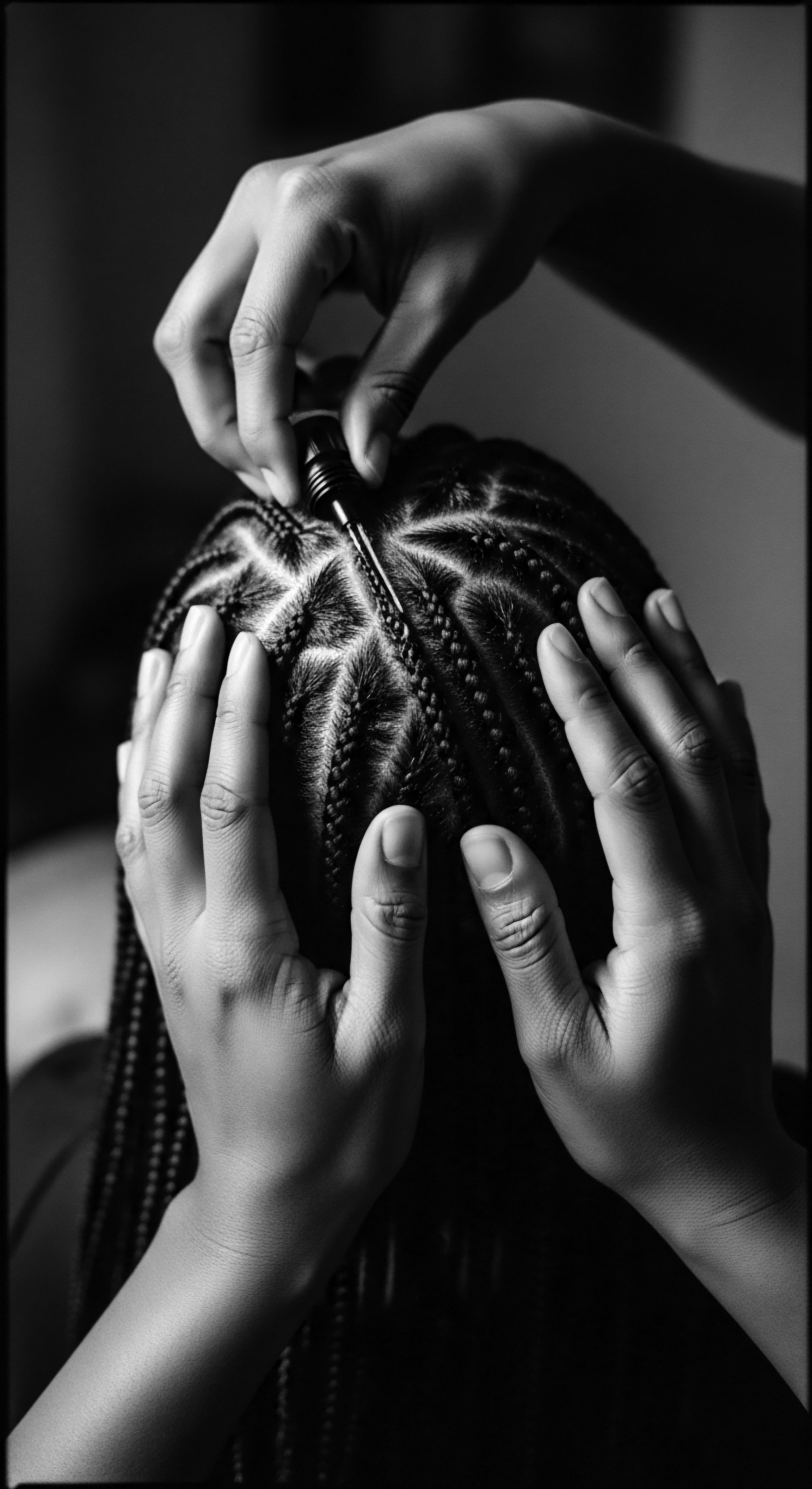
The Chemistry of Curl ❉ Bonds and Water
The intrinsic shape of textured hair is largely determined by the distribution of various bonds within the cortex. Disulfide Bonds, strong chemical linkages between sulfur atoms in keratin proteins, are permanent and give hair its enduring form. The irregular distribution of these bonds along the hair shaft contributes significantly to the formation of coils and curls. When hair is chemically straightened, these bonds are broken and reformed to alter the fiber’s shape.
Beyond these permanent structures, the interaction of hair with water is a crucial aspect of its mechanics. Hydrogen Bonds, weaker and temporary bonds formed between water molecules and keratin, are responsible for hair’s temporary shape changes, such as shrinkage. When textured hair absorbs water, these hydrogen bonds break and reform, allowing the hair to swell and the curl pattern to loosen. As the hair dries, the bonds reform, causing the hair to revert to its natural, often tighter, coil or curl.
This phenomenon, often termed ‘shrinkage,’ is a mechanical property inherent to textured hair, a visible sign of its unique interaction with moisture. Ancestral practices, like stretching hair with braiding or threading, intuitively managed this water-induced mechanical behavior to maintain length and prevent tangling.
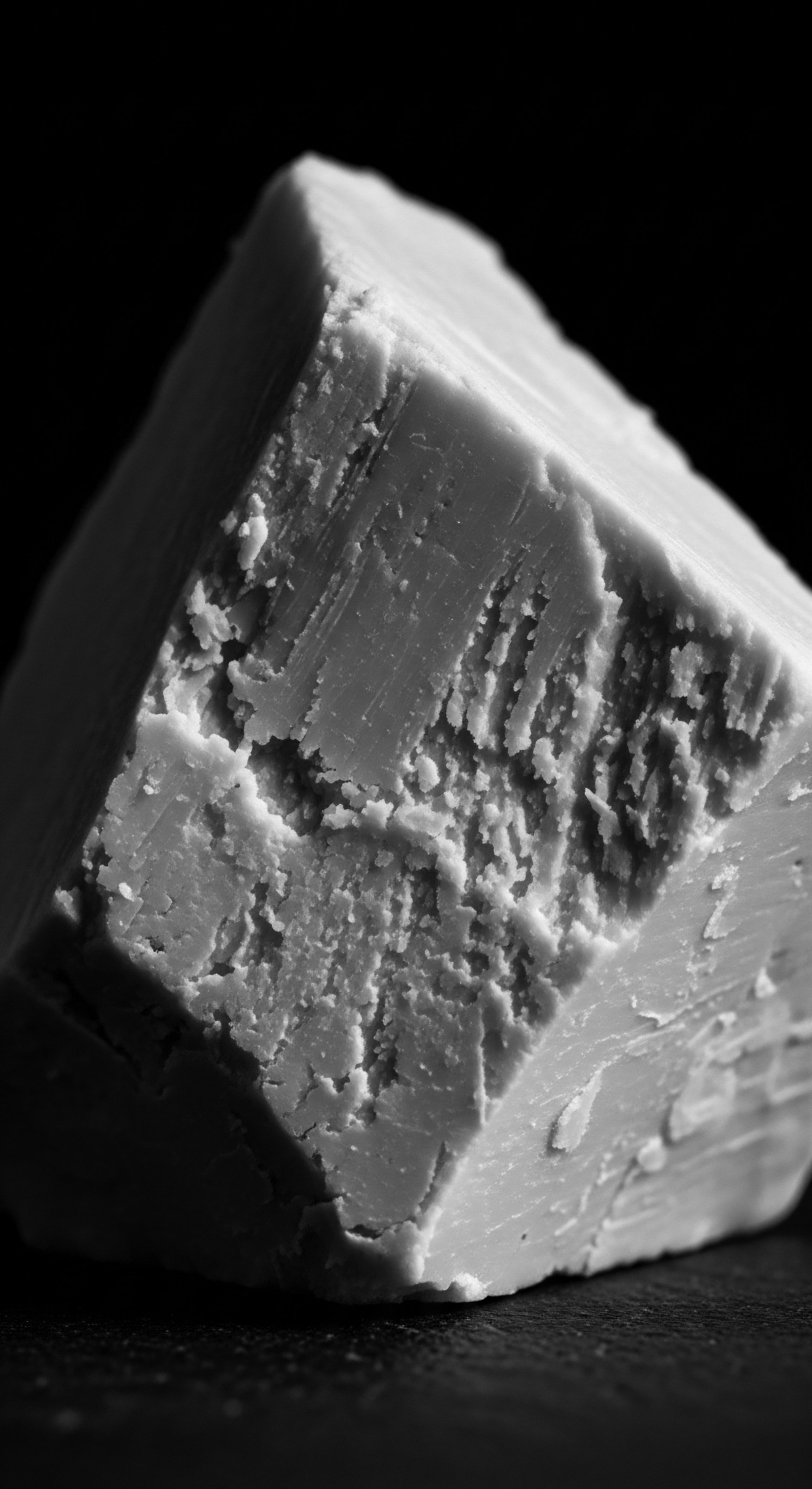
Ancestral Ingenuity ❉ Managing Mechanical Stress
For generations, Black and mixed-race communities have developed sophisticated practices that implicitly addressed the Hair Fiber Mechanics of their unique strands. These methods were not just about aesthetics; they were about preserving the integrity of the hair fiber, minimizing breakage, and maintaining its health against environmental challenges and daily manipulation. The historical record, often passed down through oral traditions and communal learning, reveals a profound understanding of hair’s needs.
| Traditional Practice Hair Oiling/Greasing |
| Underlying Hair Fiber Mechanic Addressed Lubrication, Cuticle Sealing, Moisture Retention |
| Historical Context/Benefit Common across various African cultures (e.g. shea butter, palm oil, coconut oil) to soften hair, reduce friction during styling, and prevent dryness, thereby reducing mechanical stress and breakage. |
| Traditional Practice Protective Styling (Braids, Twists, Locks) |
| Underlying Hair Fiber Mechanic Addressed Minimizing Manipulation, Stress Distribution, Environmental Protection |
| Historical Context/Benefit Ancient practice found in many African societies, shielding hair from daily combing, tangling, and environmental exposure. This reduces mechanical fatigue on individual strands, promoting length retention. |
| Traditional Practice Detangling with Fingers/Wide-Tooth Combs |
| Underlying Hair Fiber Mechanic Addressed Gentle Separation, Minimizing Breakage Points |
| Historical Context/Benefit Emphasized in many traditional communities to carefully work through knots, preventing excessive force on the hair fiber, which is particularly vulnerable when wet and stretched. |
| Traditional Practice Steaming/Warm Water Rinses |
| Underlying Hair Fiber Mechanic Addressed Cuticle Opening, Enhanced Product Penetration |
| Historical Context/Benefit Used to open the hair cuticle, allowing nourishing ingredients from herbs and oils to penetrate more deeply, improving hair's internal moisture balance and flexibility. |
| Traditional Practice These practices, honed over centuries, demonstrate an intuitive understanding of hair's mechanical responses to moisture, friction, and tension, safeguarding the vitality of textured hair. |
Consider the profound significance of Hair Threading, a technique prevalent in various West and Central African communities for centuries. This method involves wrapping strands of hair tightly with thread, stretching the hair while it dries. Mechanically, this process elongates the hydrogen bonds within the cortex, temporarily altering the hair’s shape and reducing shrinkage.
More importantly, it encases the hair, protecting it from external friction and manipulation, thereby minimizing mechanical stress and breakage. This ingenious practice allowed for length retention and easier styling, serving as a powerful example of how ancestral wisdom directly applied principles of Hair Fiber Mechanics to ensure the health and longevity of textured hair.
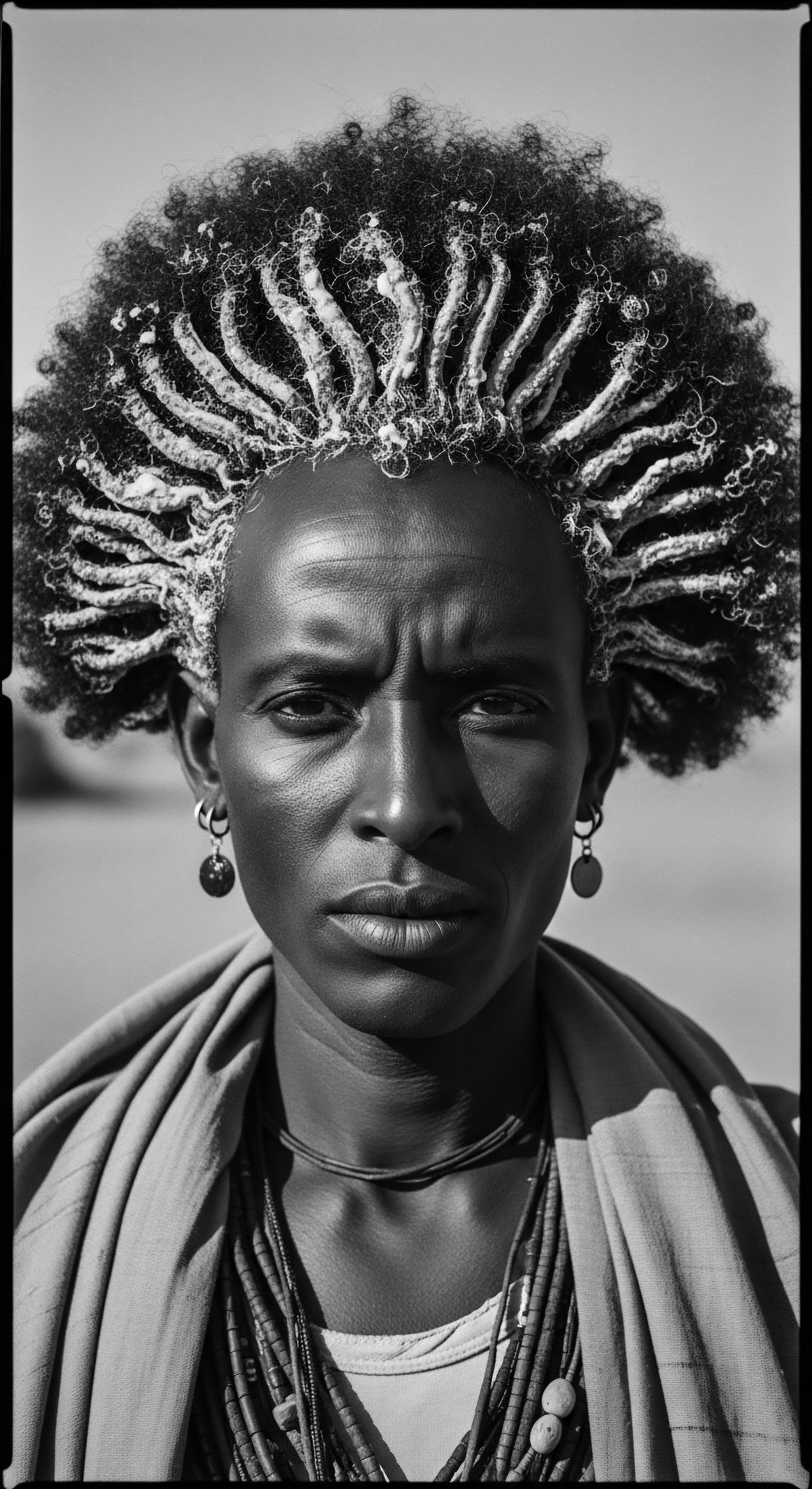
Academic
The academic elucidation of Hair Fiber Mechanics transcends superficial observation, delving into the precise biomechanical properties and molecular interactions that govern the behavior of hair, particularly textured hair. This scholarly interpretation defines the hair fiber as a complex biological polymer, whose structural hierarchy—from its protein constituents to its macroscopic curl pattern—dictates its mechanical response to external stimuli. The significance of this study for textured hair lies in its capacity to provide a rigorous framework for understanding the unique vulnerabilities and remarkable strengths inherent in diverse Black and mixed-race hair experiences, often validating the empirical knowledge passed down through generations.
The physical properties of hair, such as its Tensile Modulus (stiffness), Yield Point (stress at which permanent deformation begins), and Breakage Strain (stretch before breaking), are critically influenced by its unique morphology. Unlike straight hair, the helical and elliptical cross-sections of coily and curly hair distribute stress unevenly along the fiber. The points of greatest curvature become regions of localized stress concentration, rendering these areas more susceptible to fracture under tension or repeated manipulation. This precise understanding clarifies why practices that minimize mechanical friction and provide ample lubrication, long-standing in traditional care, are scientifically sound.
Academic Hair Fiber Mechanics offers a granular view of textured hair’s biomechanics, affirming ancestral care practices through rigorous scientific inquiry.
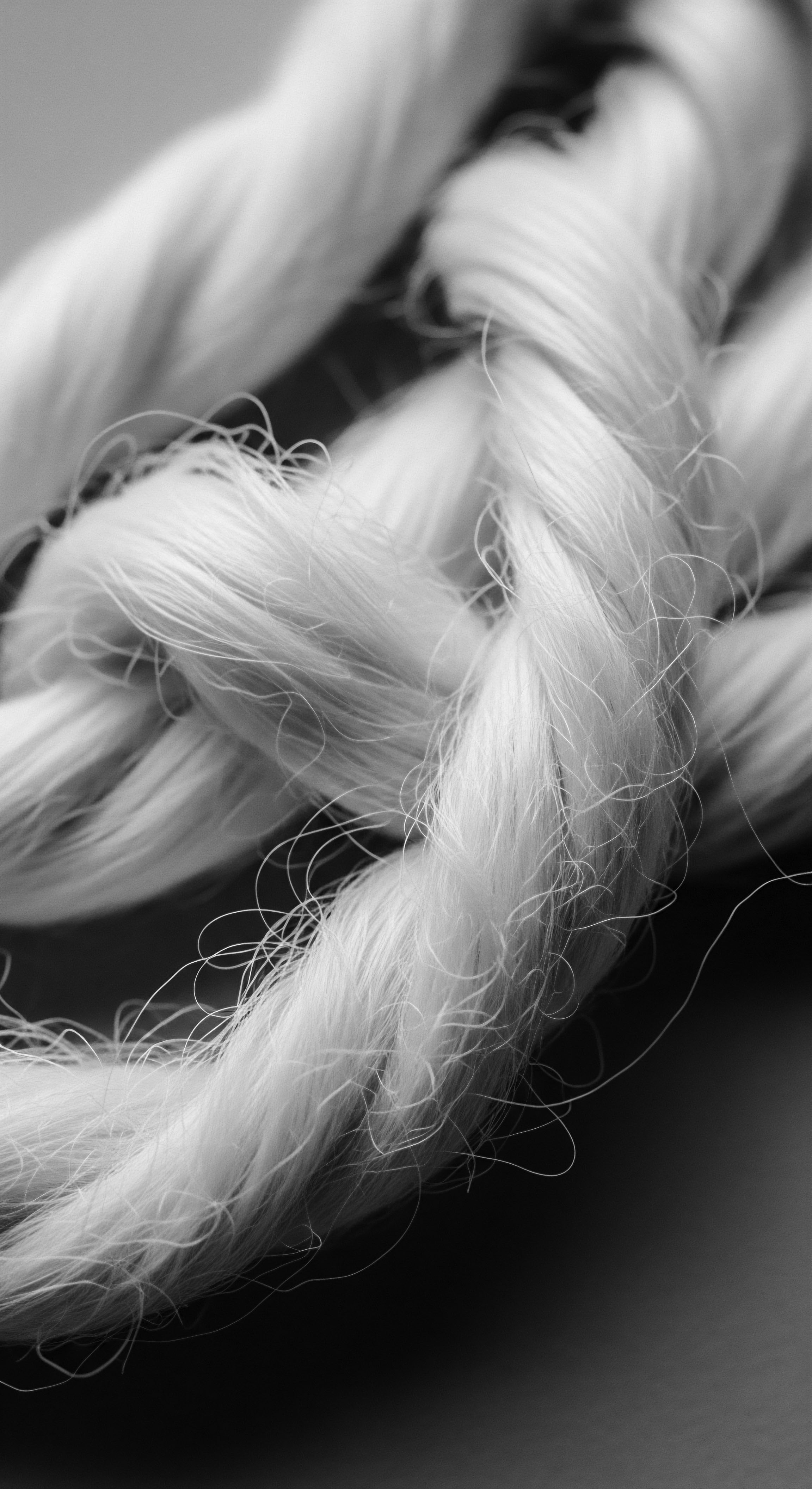
The Micro-Architecture of Resilience and Vulnerability
From a biomechanical perspective, the resilience of textured hair is a marvel, yet its distinct architecture also presents specific challenges. The complex coiling of the fiber results in a shorter perceived length than its actual length, a phenomenon known as shrinkage. This characteristic, while visually impactful, also means that a greater length of fiber must be manipulated during styling and detangling, increasing the potential for mechanical damage if not approached with appropriate technique. The cumulative effect of repetitive mechanical stresses, such as combing, brushing, or even pillow friction, can lead to Fatigue Failure, where the hair fiber weakens over time, even below its immediate breaking point.
Research into the mechanical properties of hair from different ethnic groups provides compelling data. A study by Porter and Bhushan (2005) utilized atomic force microscopy to investigate the nanoscale mechanical properties of human hair, observing differences in the elasticity and friction of various hair types. While specific numerical comparisons require careful contextualization, the study generally indicated that hair with higher degrees of curl can exhibit distinct mechanical behaviors at the micro-level, impacting its susceptibility to damage and its interaction with external forces. This scientific lens validates the long-held communal understanding that textured hair demands a gentler, more deliberate approach to manipulation and care.
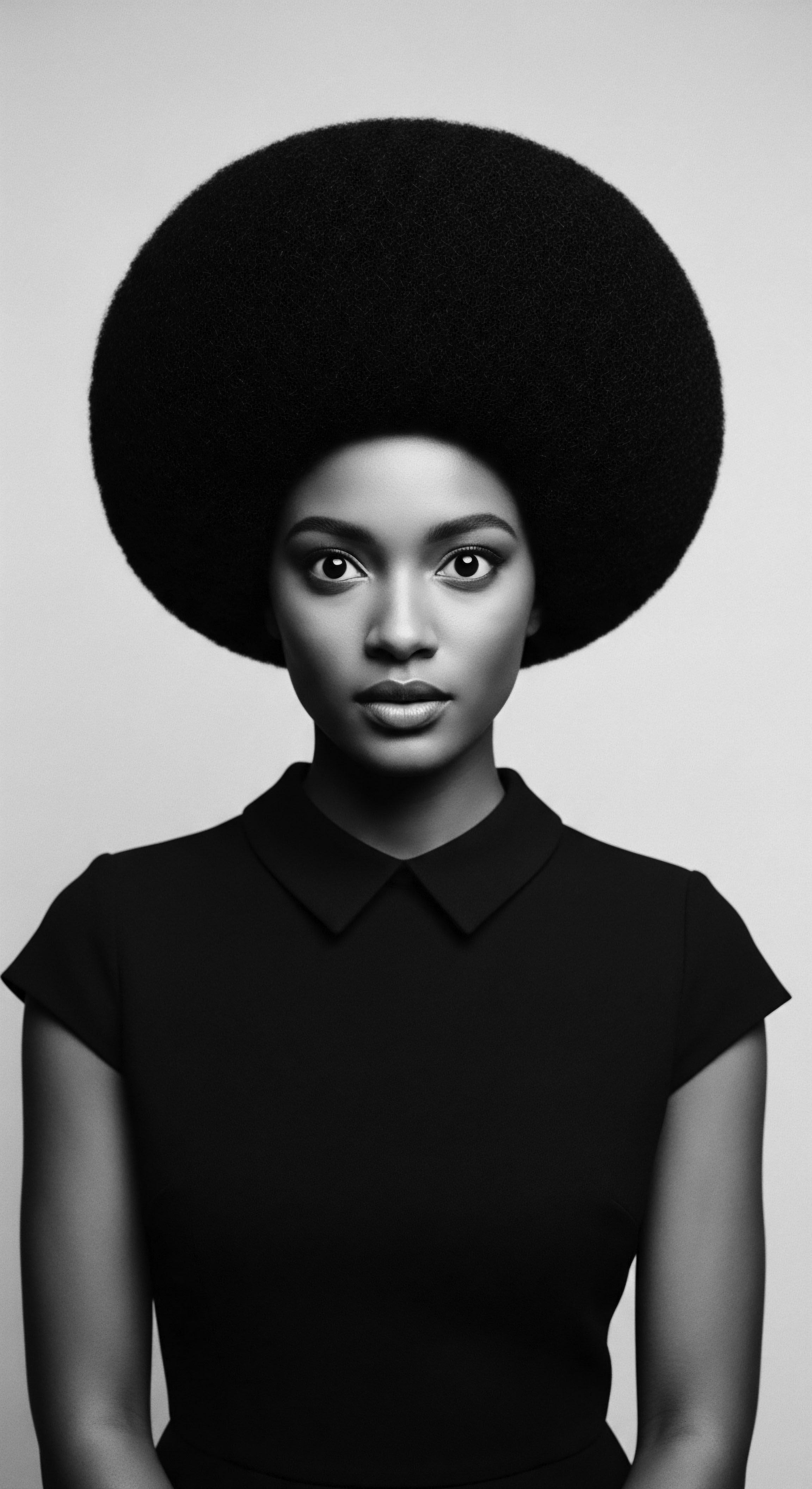
Mechanical Stress and Ancestral Ingenuity
The historical experiences of Black and mixed-race communities have been profoundly shaped by the Hair Fiber Mechanics of their hair, particularly in contexts of societal pressure and systemic oppression. Consider the era of enslavement in the Americas, where enslaved Africans, stripped of their cultural tools and traditional care practices, faced immense challenges in maintaining their hair. Despite these brutal conditions, ancestral ingenuity persisted. The practice of Cornrowing, for instance, a technique with roots in ancient African civilizations, served not only as a means of neatness but also as a powerful protective style.
Mechanically, cornrows minimize individual strand exposure, distribute tension evenly across the scalp, and reduce the frequency of manipulation, thereby mitigating breakage and preserving hair length in an environment often hostile to its care. This was a profound act of resilience, a silent assertion of self and heritage through the deliberate management of hair fiber mechanics under duress.
Moreover, the cultural practices surrounding hair often contained implicit mechanical wisdom. The application of natural emollients like shea butter or castor oil, widely used in African diasporic communities, serves to lubricate the hair shaft, reducing the coefficient of friction between strands and external objects. This mechanical lubrication minimizes cuticle abrasion and breakage during detangling and styling. The very act of sectioning hair before manipulation, a common practice in textured hair care, is a mechanical strategy to manage large volumes of hair efficiently, preventing tangling and reducing the overall force applied to individual strands.
The historical context of chemical relaxers, while appearing to offer ease of management, also provides a stark example of mechanical impact. These processes chemically alter the disulfide bonds within the hair cortex, permanently reshaping the fiber. While achieving a straighter appearance, this chemical alteration often compromises the hair’s inherent mechanical integrity, reducing its elasticity and increasing its susceptibility to breakage, particularly at the line of demarcation between new growth and chemically treated hair. This historical shift underscores the ongoing dialogue between desired aesthetics and the underlying mechanical health of the hair fiber.
The ongoing scholarly discourse surrounding Hair Fiber Mechanics for textured hair seeks to not only explain its scientific properties but also to honor the historical and cultural contexts that have shaped its care. This involves a nuanced examination of how traditional practices, often dismissed as anecdotal, represent sophisticated applications of mechanical principles, safeguarding the hair’s structure and affirming its cultural meaning.
- Friction Management ❉ Textured hair, due to its curvilinear shape, experiences higher inter-fiber friction compared to straight hair. Traditional methods of oiling and buttering the hair reduce this friction, minimizing mechanical wear and tear on the cuticle.
- Stress Distribution ❉ Protective styles like braids and twists redistribute the tensile stress from individual strands across larger sections of hair and the scalp, preventing localized breakage at points of high curvature.
- Hydro-Mechanical Behavior ❉ The pronounced swelling and shrinkage of textured hair upon wetting and drying, due to hydrogen bond dynamics, necessitates specific moisture management strategies, such as gentle drying techniques and the layering of humectants and sealants, to prevent mechanical fatigue from repeated swelling-drying cycles.
- Combing Forces ❉ Studies on combing forces reveal that significantly higher forces are required to comb textured hair compared to straight hair, particularly when dry. This scientific finding underscores the traditional emphasis on detangling textured hair when damp and saturated with conditioner, which reduces inter-fiber friction and combing resistance.
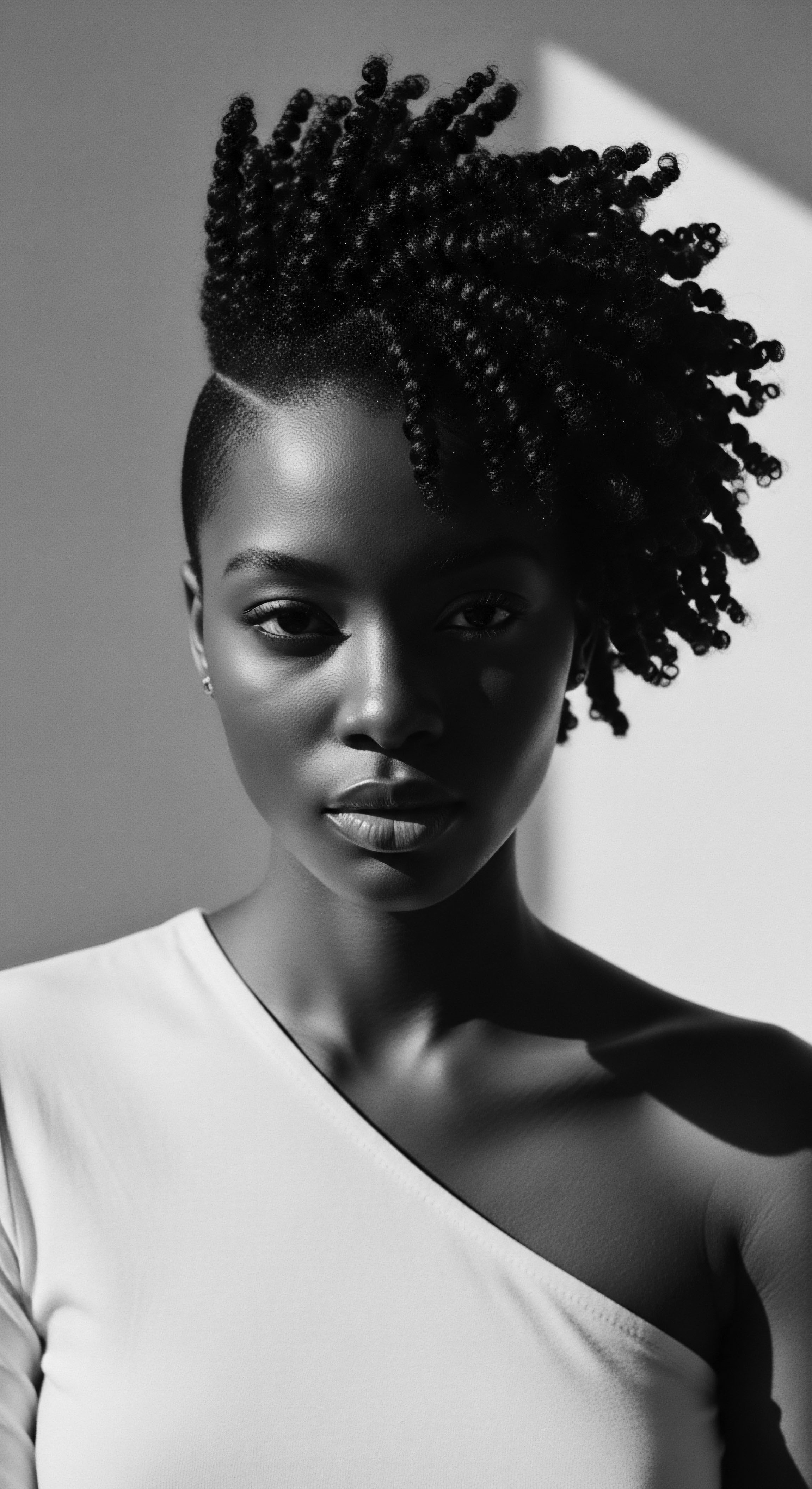
Reflection on the Heritage of Hair Fiber Mechanics
As we journey through the intricate landscape of Hair Fiber Mechanics, a profound truth emerges ❉ the science of hair is inextricably woven with the soul of a strand, a vibrant thread connecting us to our ancestral lineage. This exploration has not merely been a technical definition; it has been a reverent walk through time, witnessing how generations, with innate wisdom and discerning hands, understood and honored the inherent mechanical properties of textured hair. From the rhythmic braiding rituals of ancient African civilizations to the quiet resilience of those who maintained their coils under duress, the practical application of Hair Fiber Mechanics has always been a testament to survival, identity, and beauty.
The mechanical properties of textured hair are not simply biological facts; they are cultural markers, shaping not only how hair is cared for but also how it expresses identity, community, and resistance. Each coil, each curl, each wave carries the legacy of hands that knew how to nourish, protect, and adorn. The modern understanding of hair science, while offering precise explanations, serves primarily to affirm the profound insights of those who came before us. It bridges the gap between empirical observation and molecular explanation, allowing us to deepen our respect for practices that were, in essence, sophisticated biomechanical interventions.
Roothea’s living library seeks to honor this continuity, recognizing that the health and vitality of our textured hair today are built upon the foundations laid by our ancestors. The ongoing dialogue between scientific inquiry and inherited wisdom allows us to care for our strands not just with products, but with a profound sense of purpose and connection. It invites us to consider our hair not merely as a biological structure, but as a sacred vessel, holding the echoes of our past and the promise of our future, ever resilient, ever beautiful, ever connected to the enduring heritage of the strand.

References
- Porter, D. & Bhushan, B. (2005). Nanoscale mechanical and tribological properties of human hair. Journal of Applied Physics, 97(12), 123512.
- Robbins, C. R. (2012). Chemical and physical behavior of human hair. Springer Science & Business Media.
- Byrd, A. D. & Tharps, L. (2014). Hair story ❉ Untangling the roots of Black hair in America. St. Martin’s Press.
- Okoro, N. (2016). African Hair ❉ The Science, History and Culture. CreateSpace Independent Publishing Platform.
- Khumalo, N. P. & Gumedze, F. (2010). Hair breakage in women of African descent ❉ a clinical perspective. Clinical, Cosmetic and Investigational Dermatology, 3, 73–77.
- Marsh, L. (2019). African-American Hair Care ❉ A History of Black Hair and Beauty Culture. McFarland & Company.
- Franbourg, A. Hallegot, P. Baltenneck, F. Freyssinet, J. M. & Bouillon, C. (2003). Current research on ethnic hair. Journal of the American Academy of Dermatology, 48(6), S115-S119.
